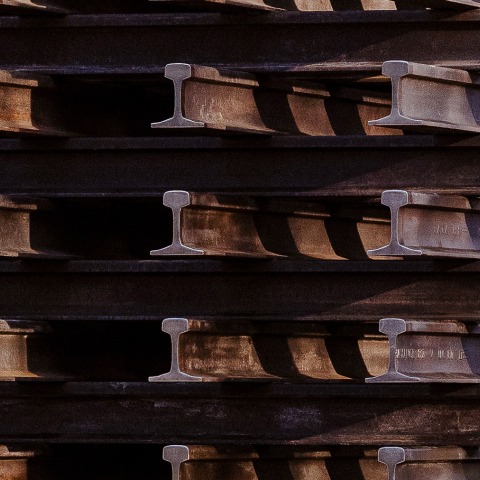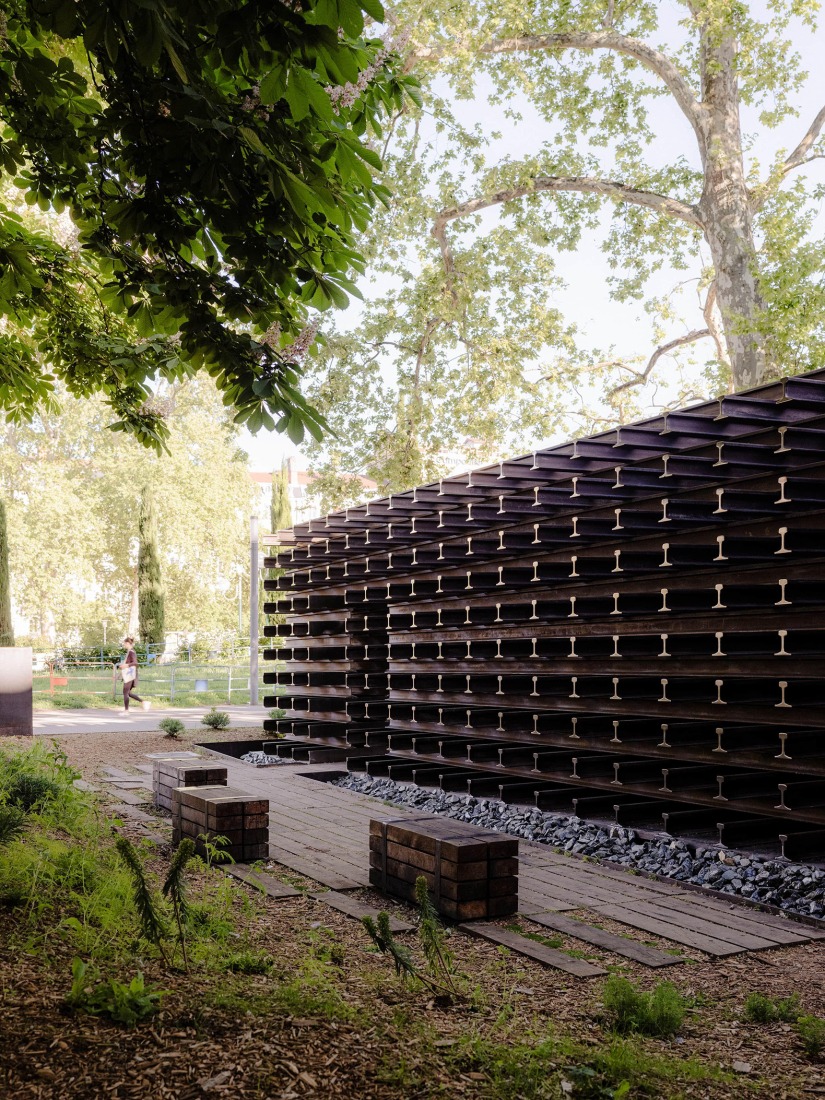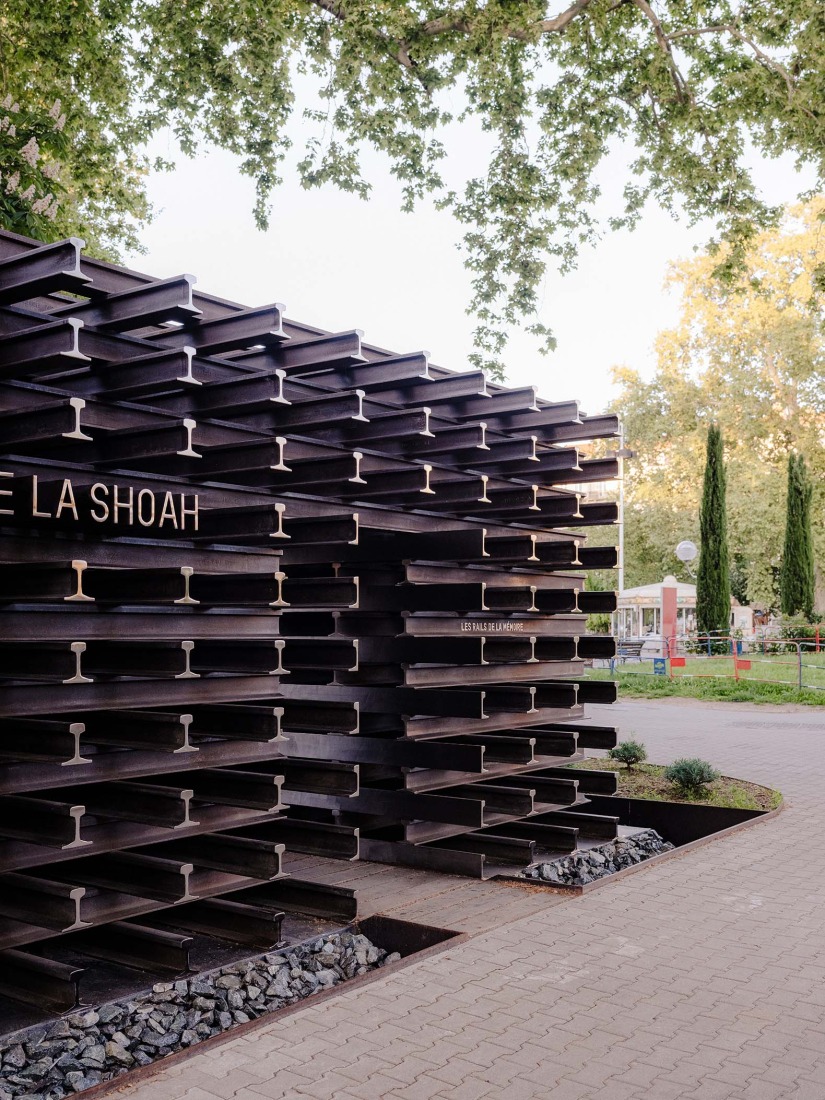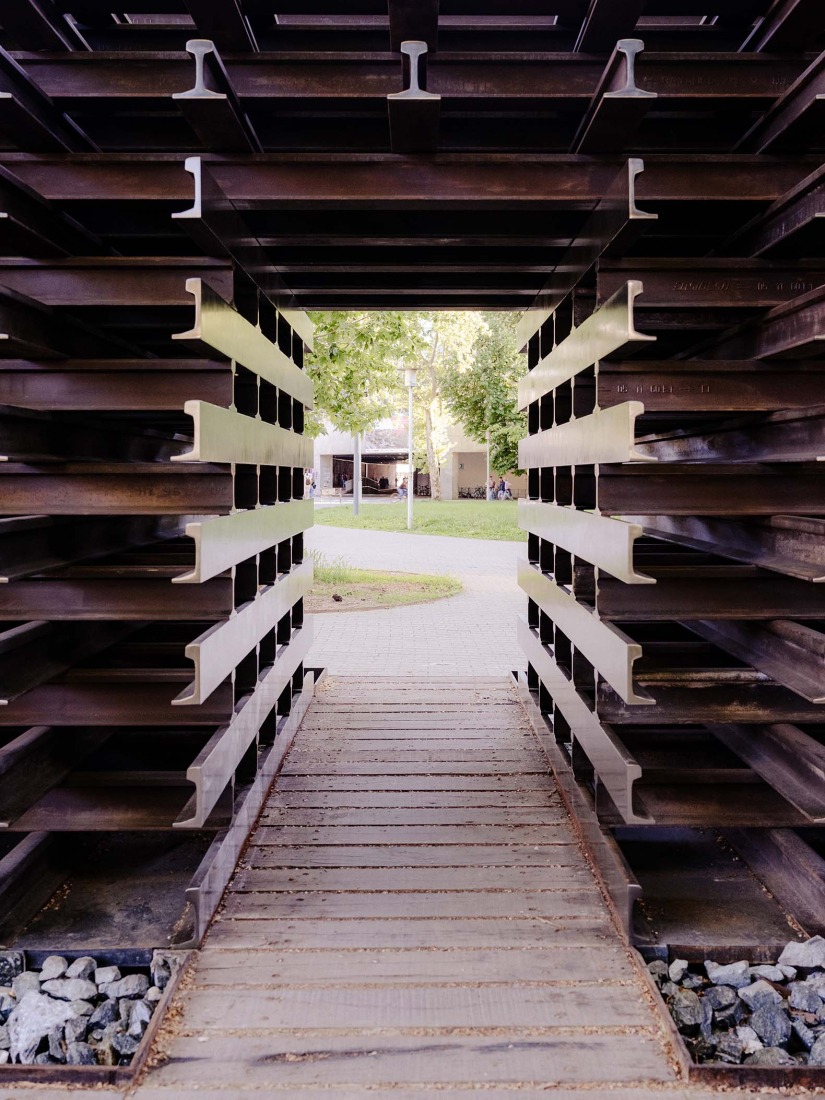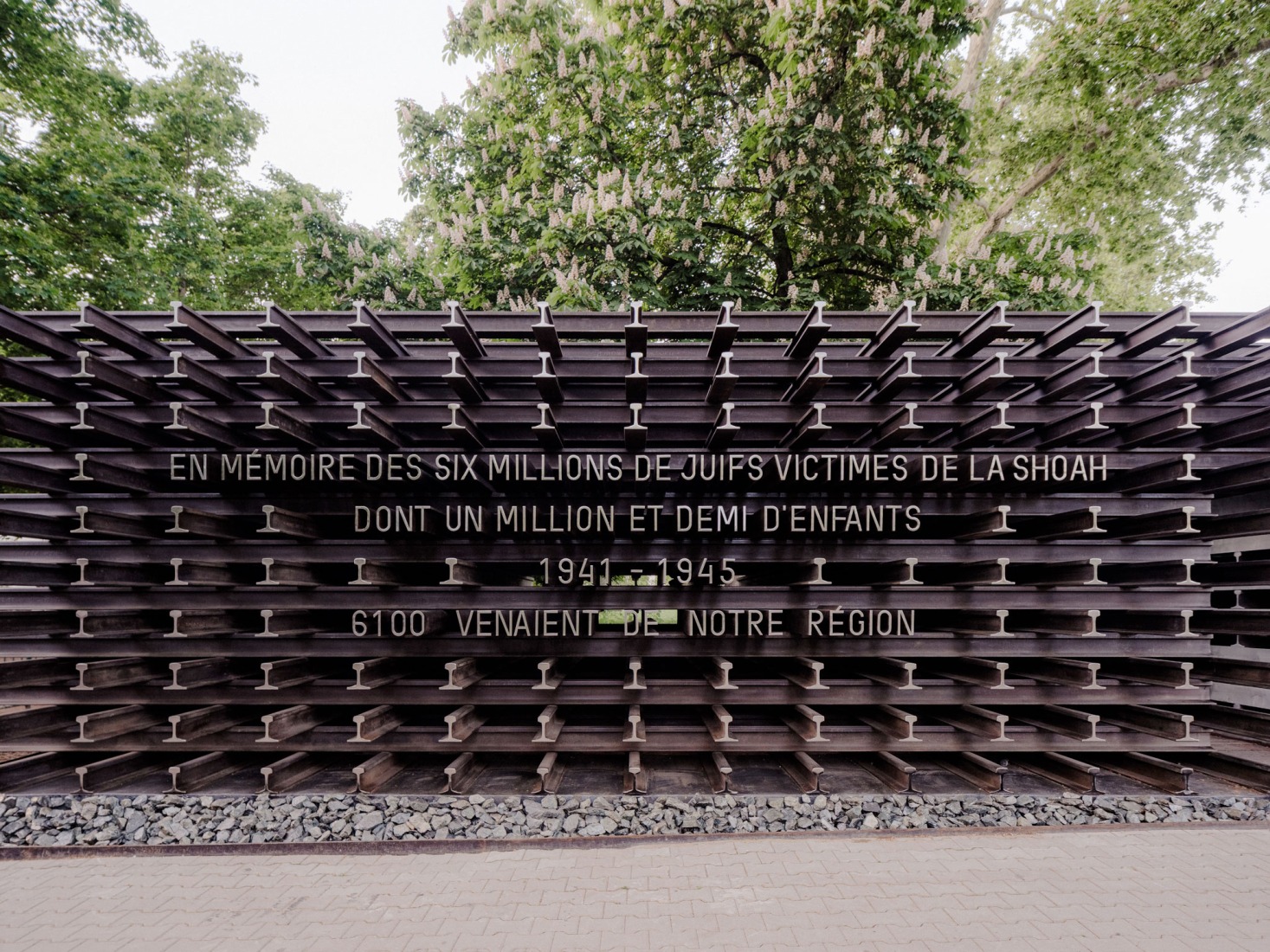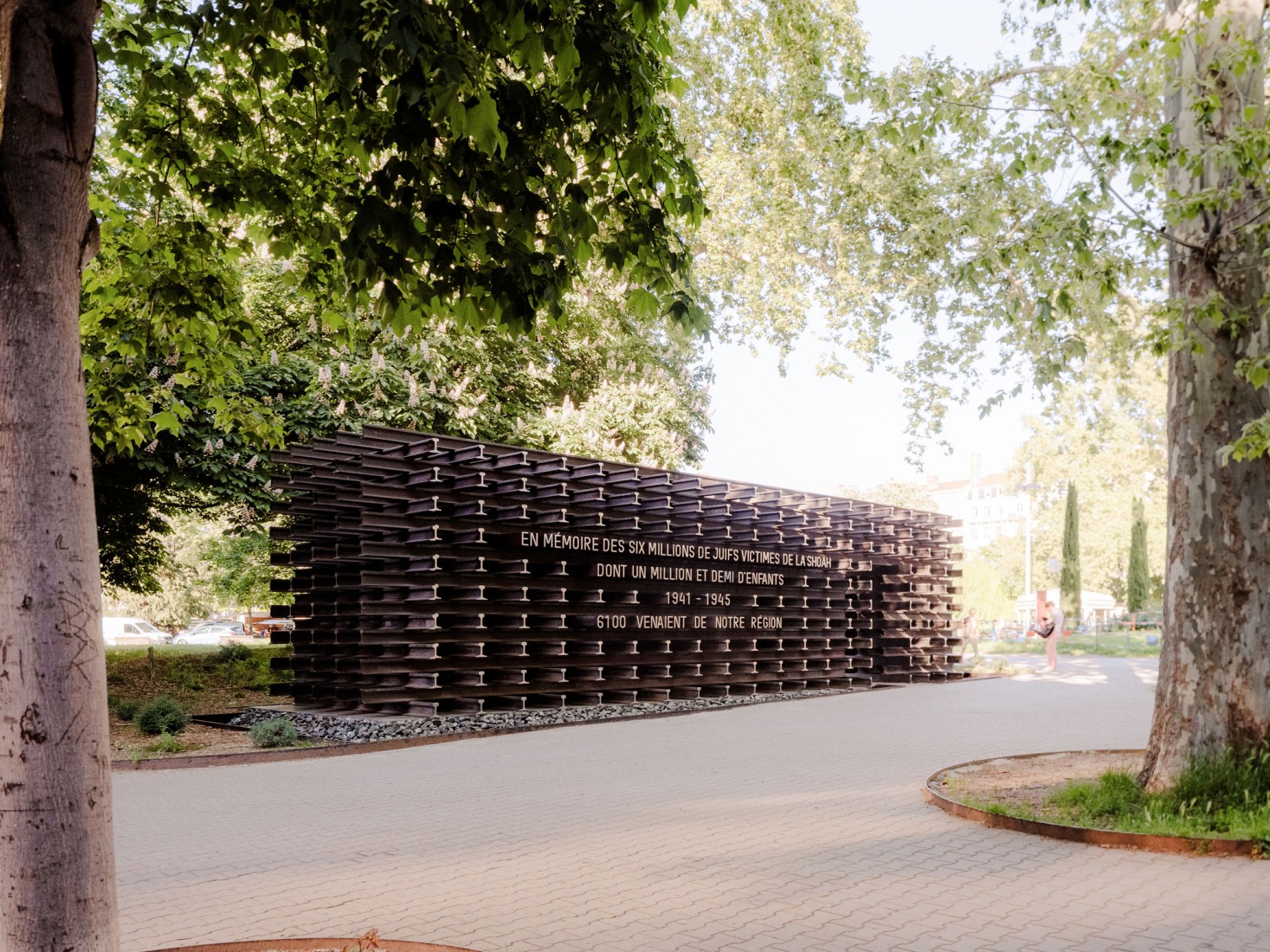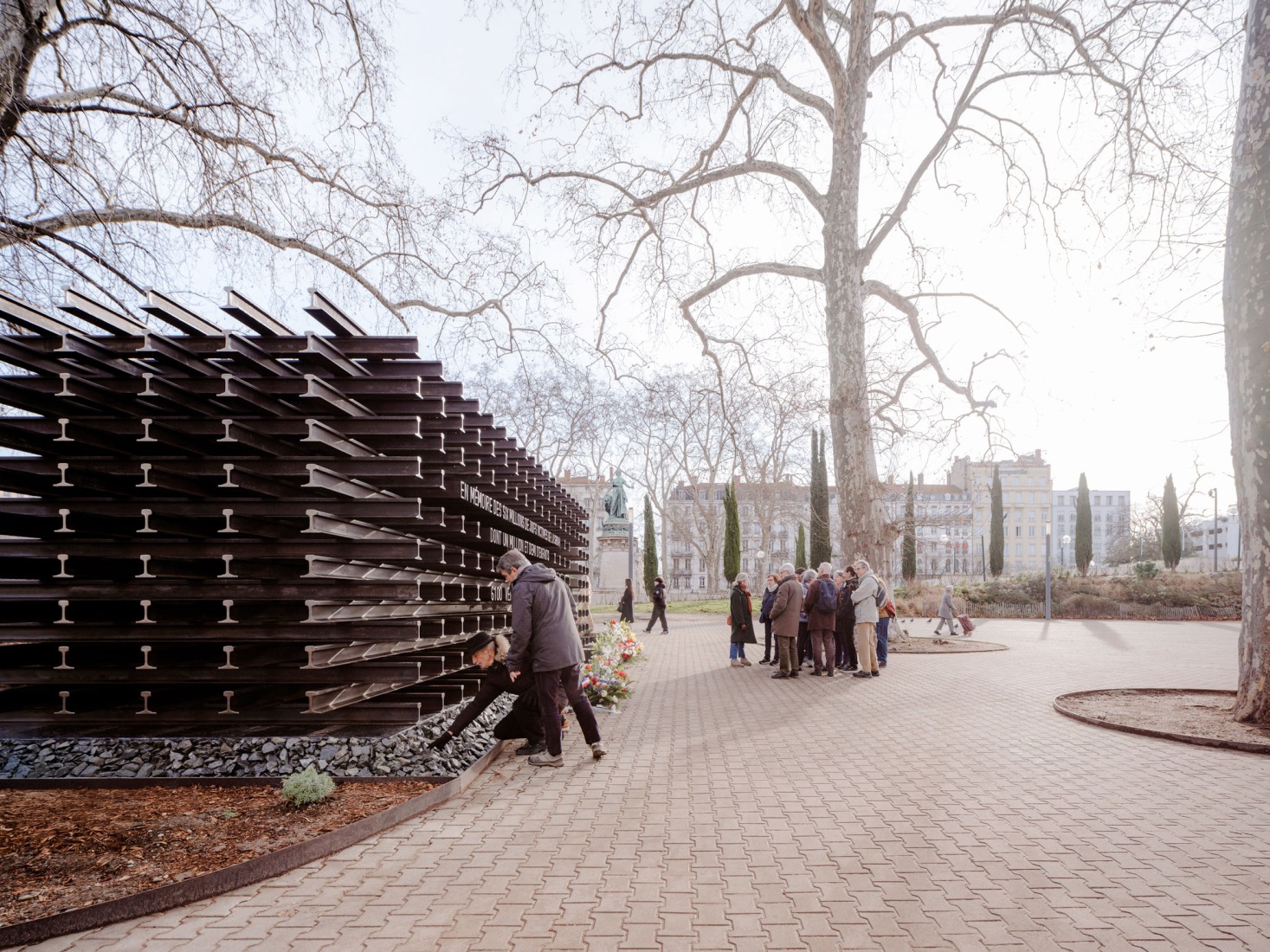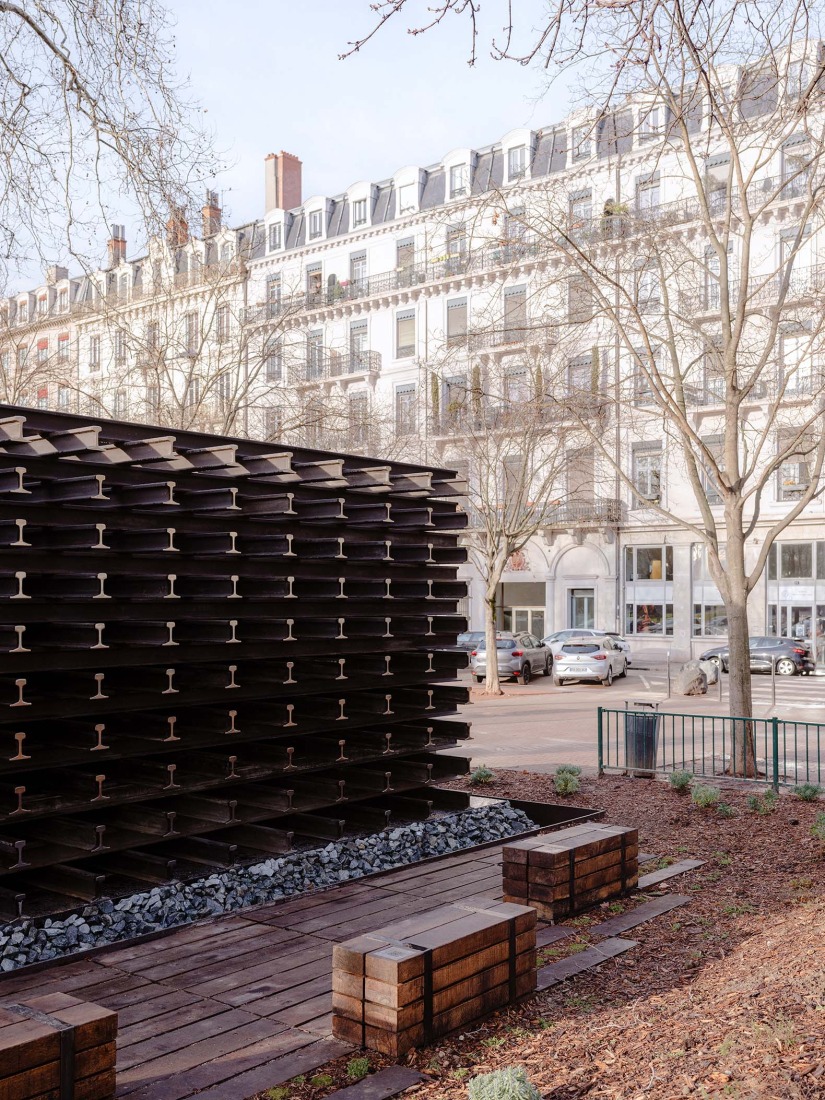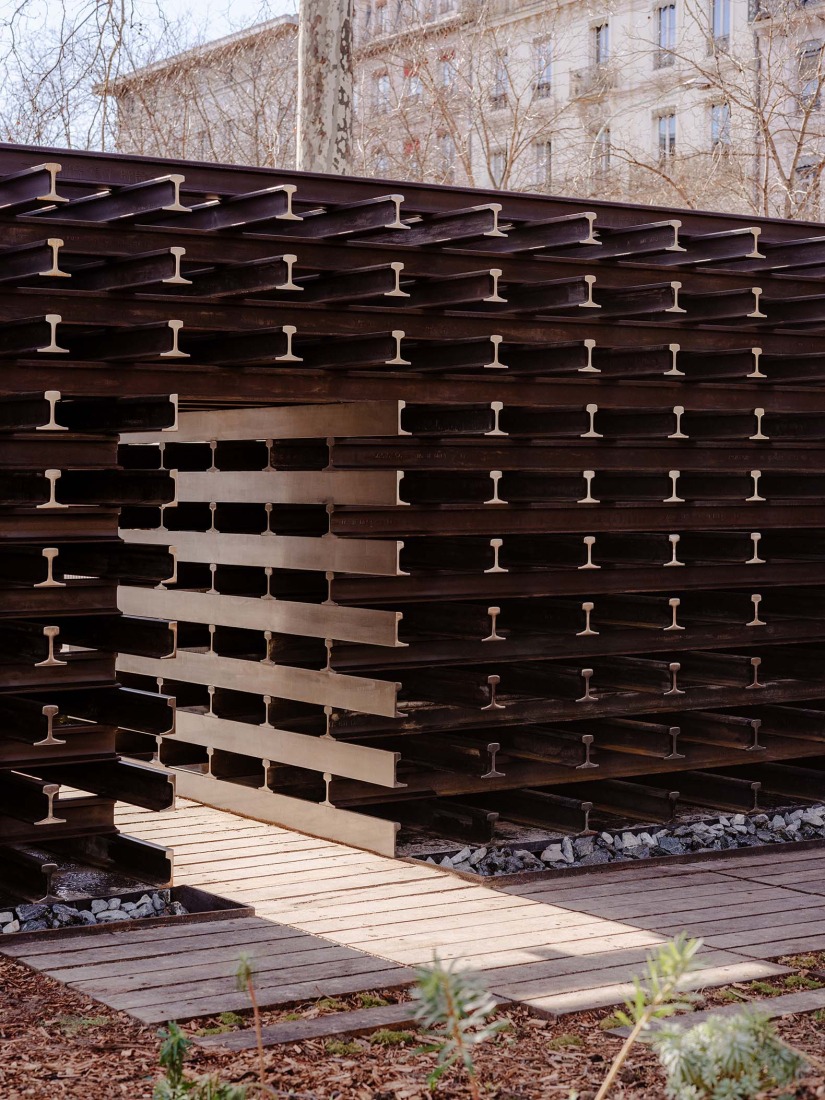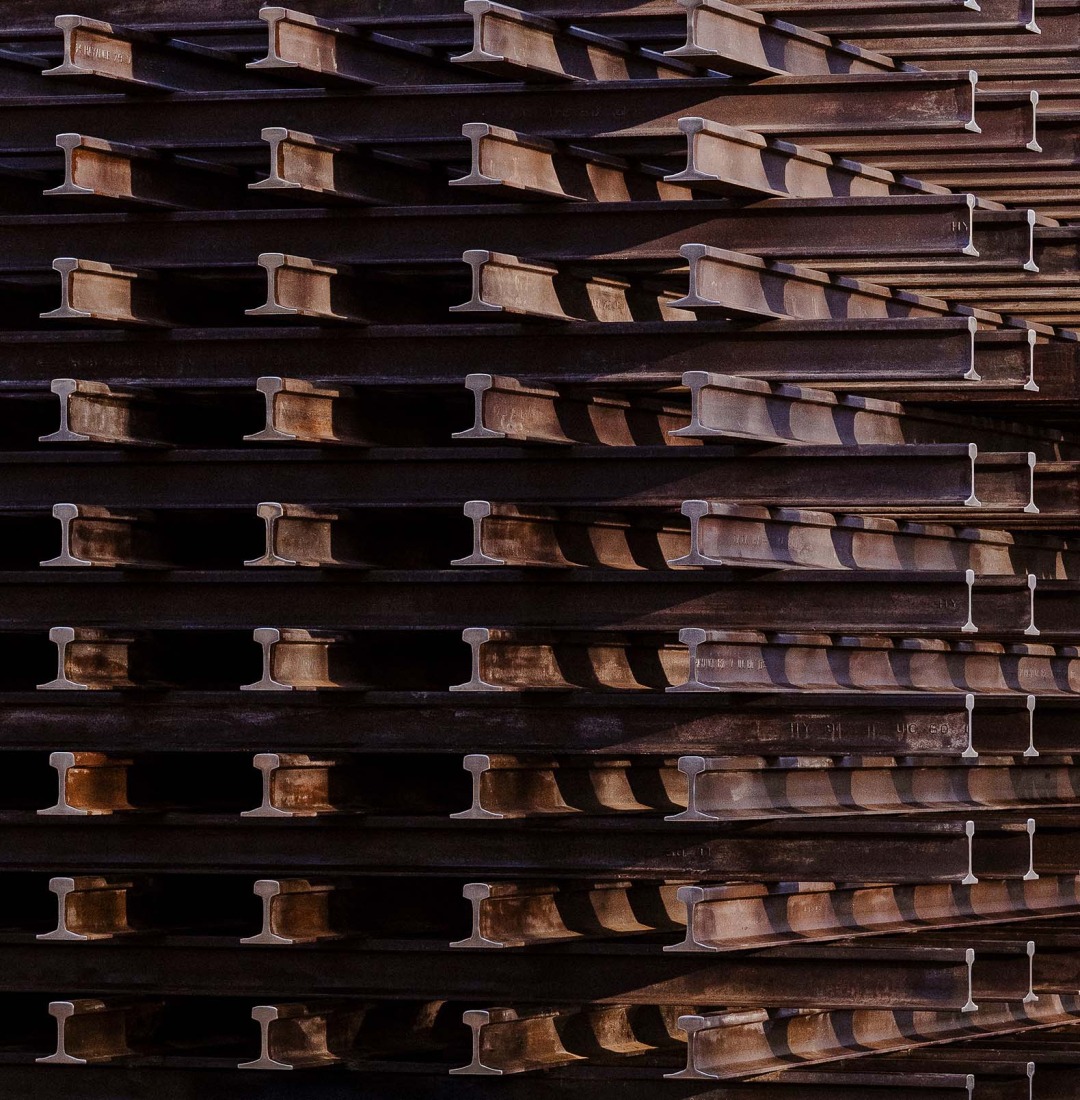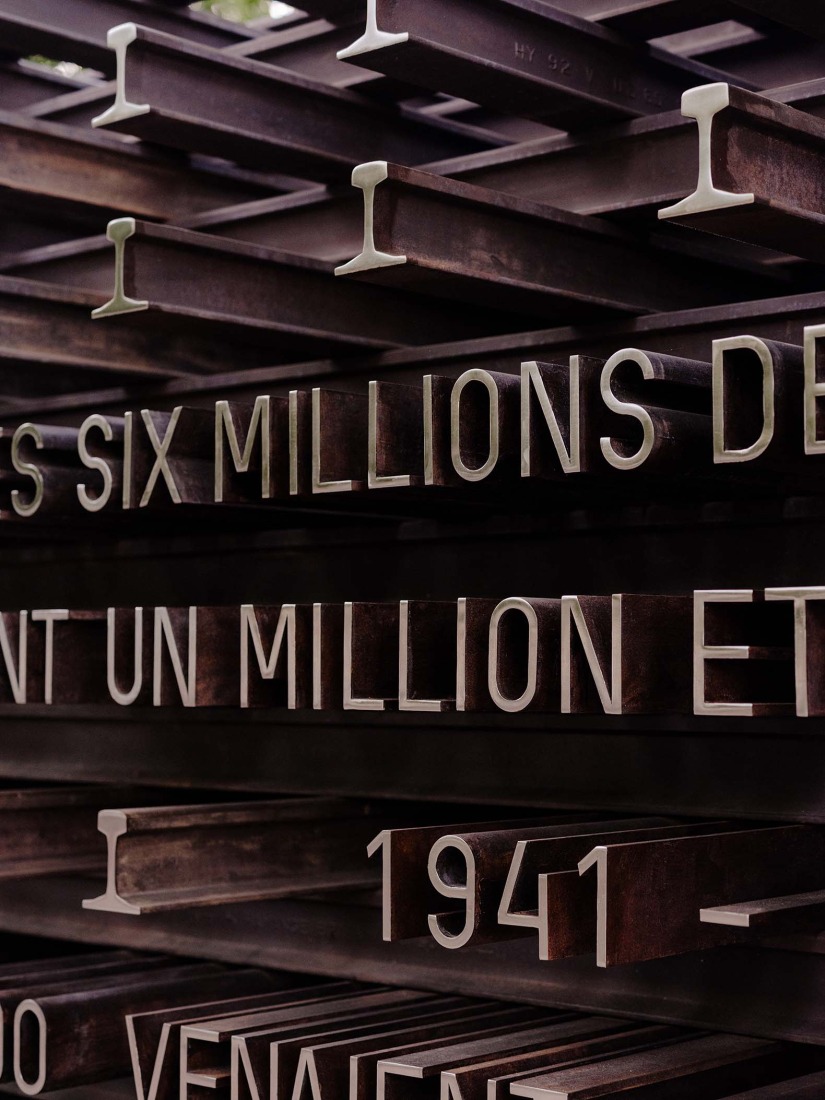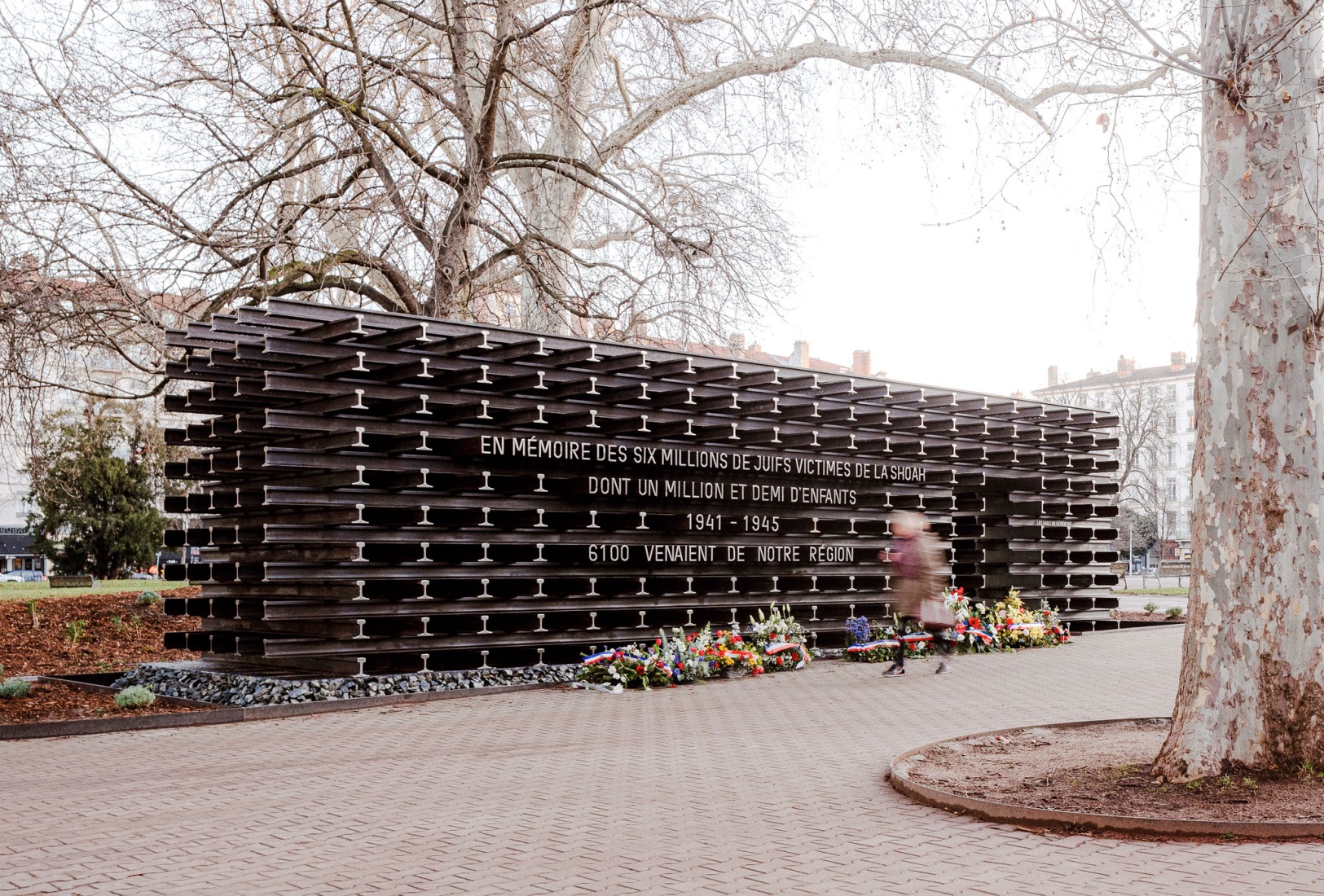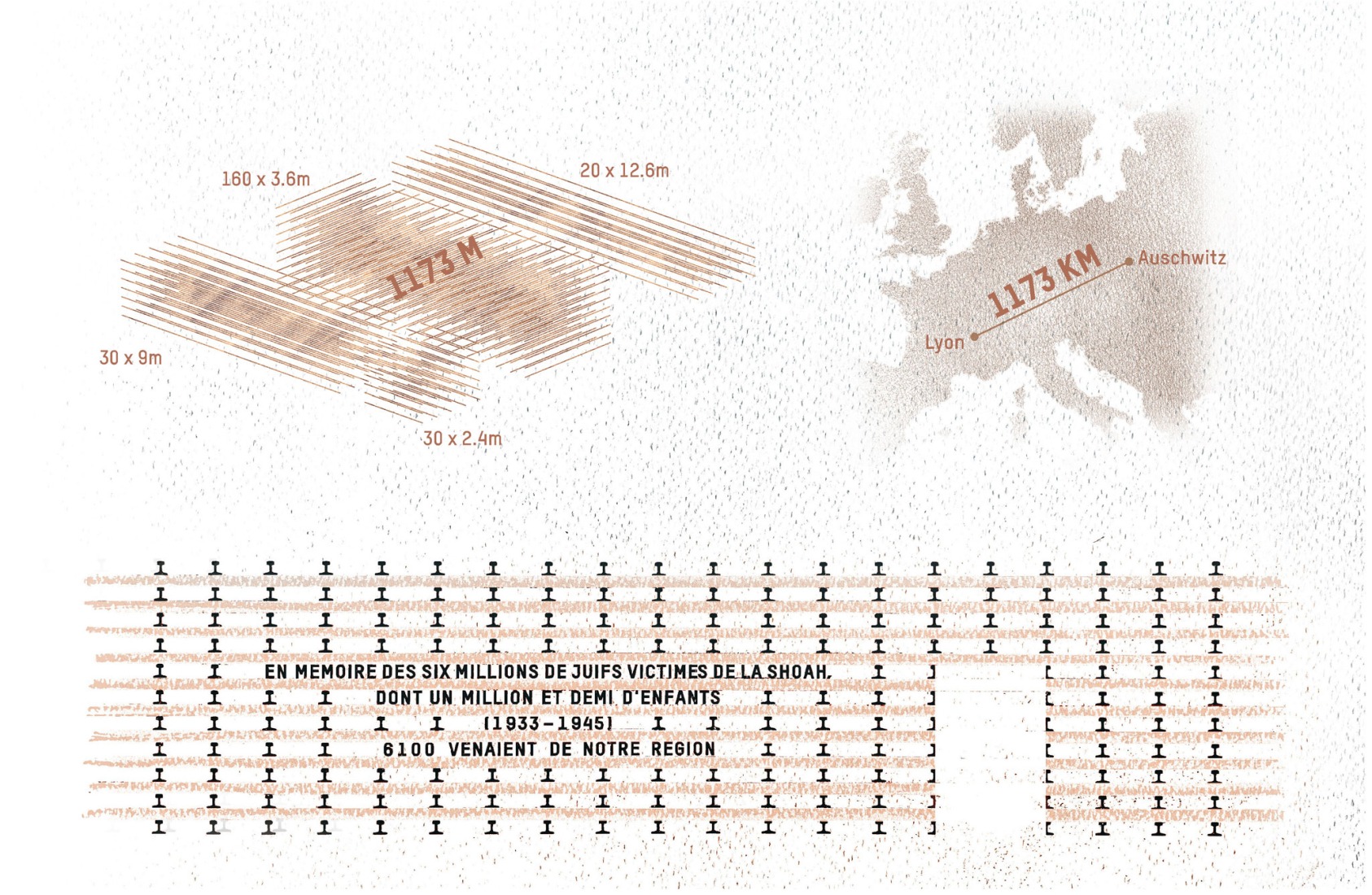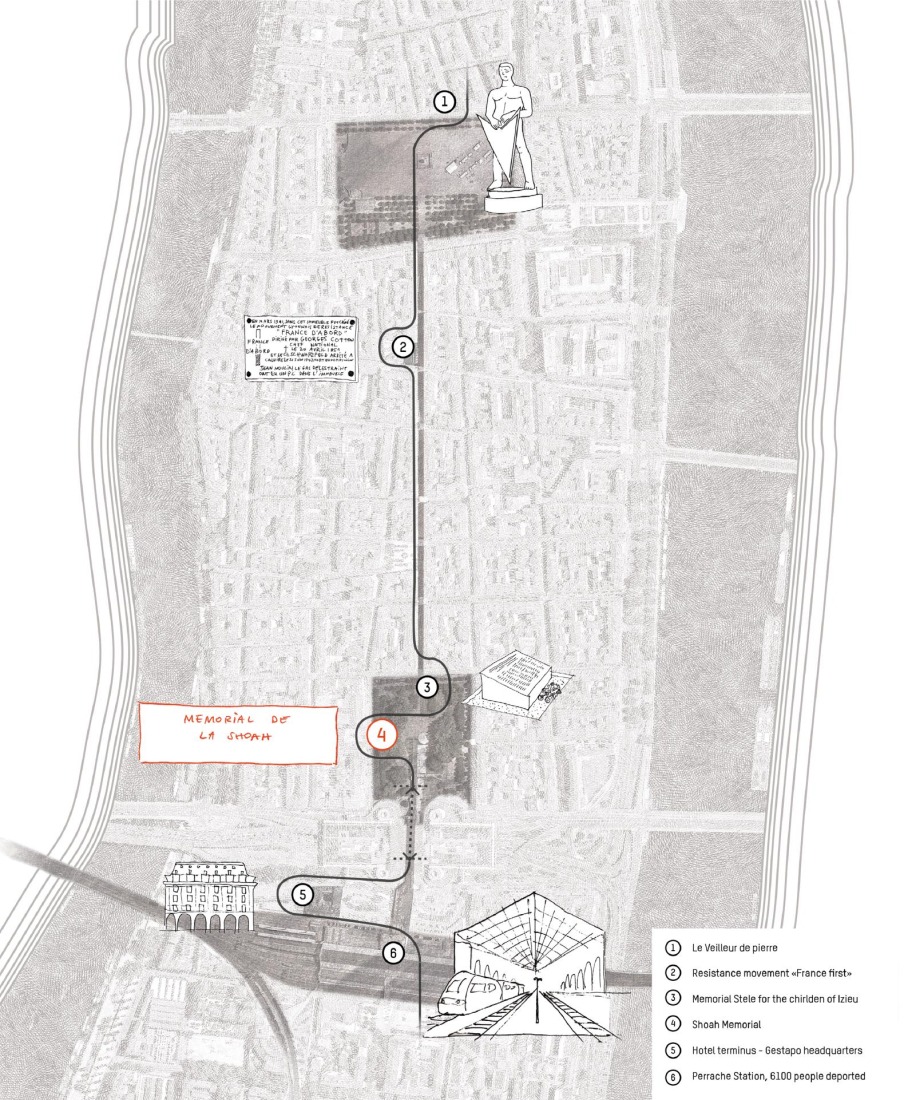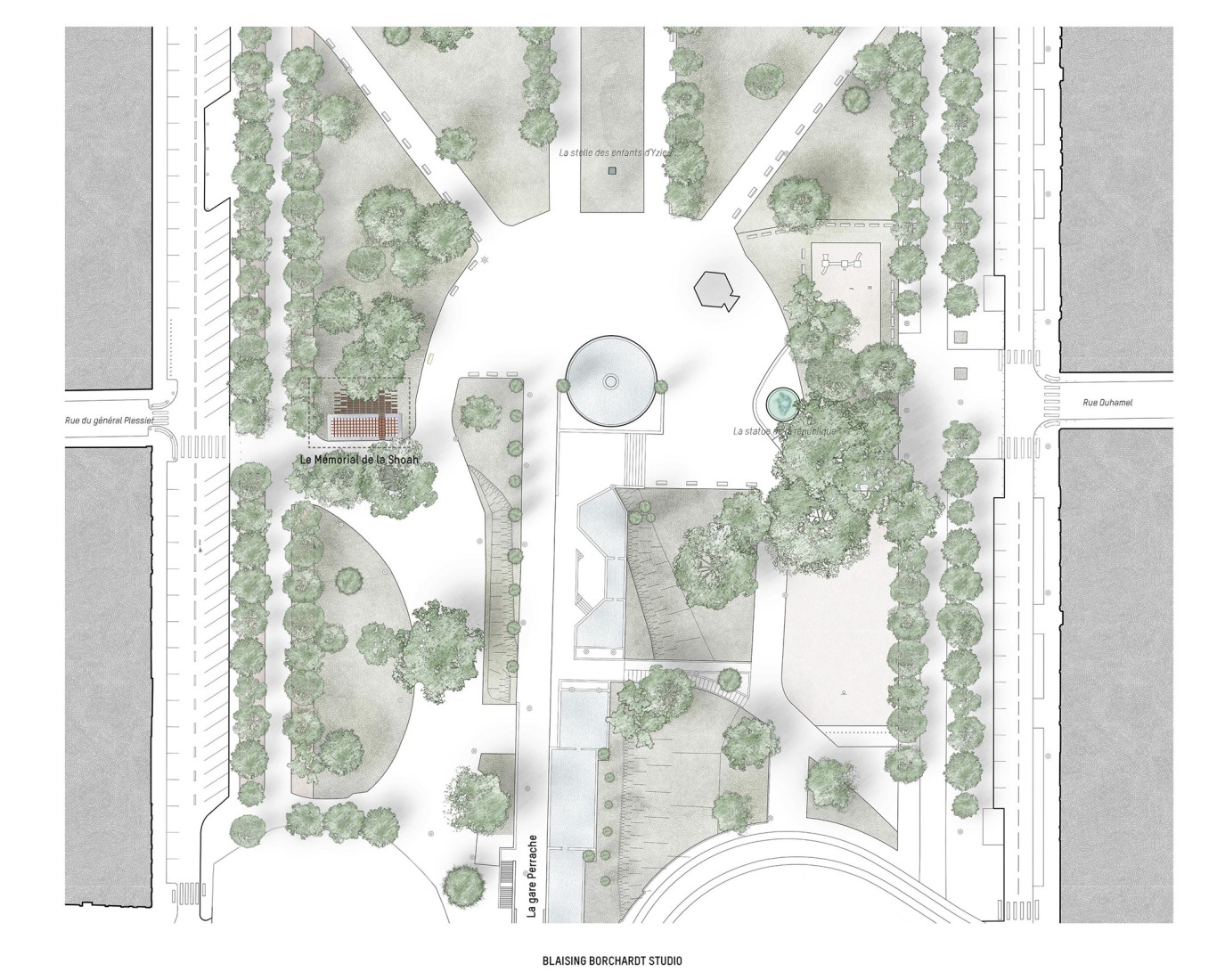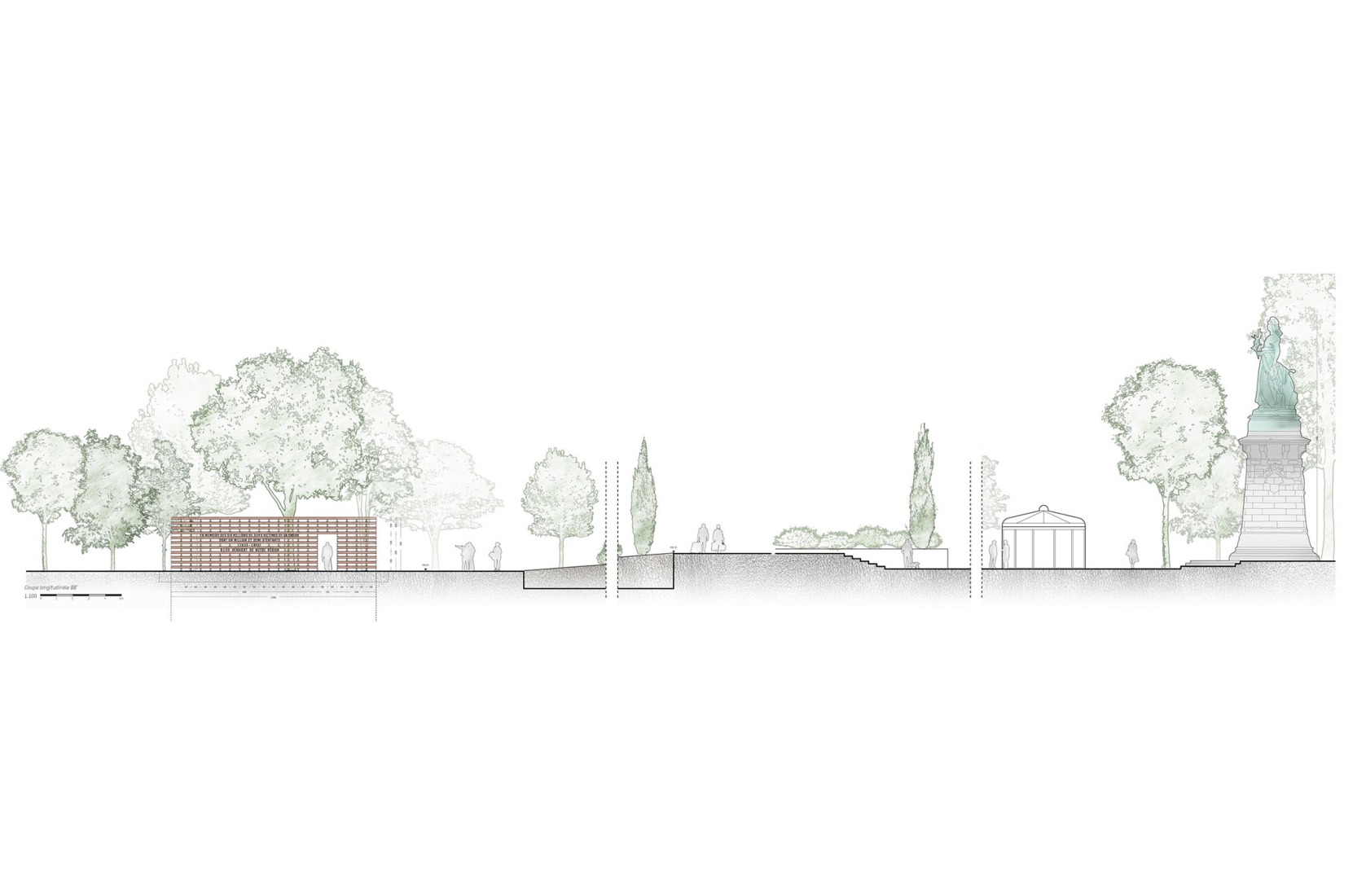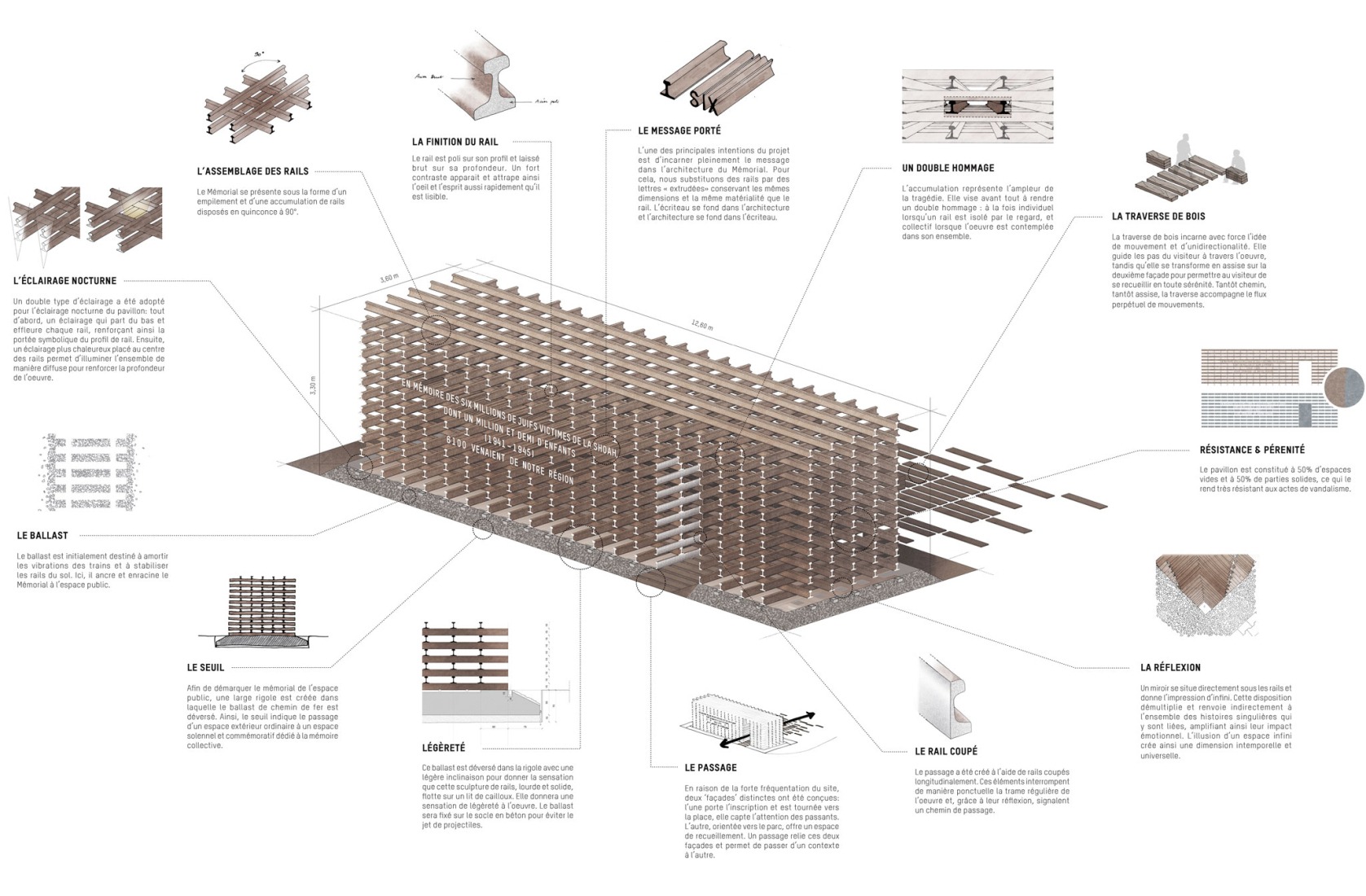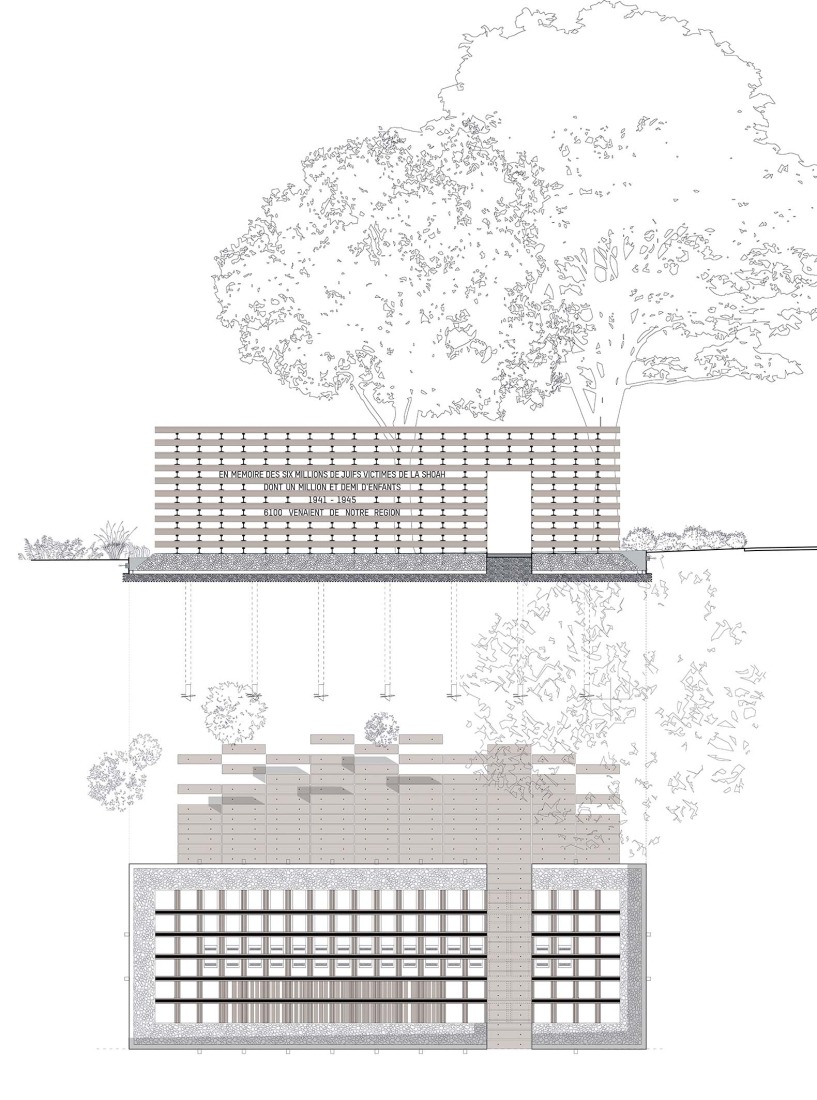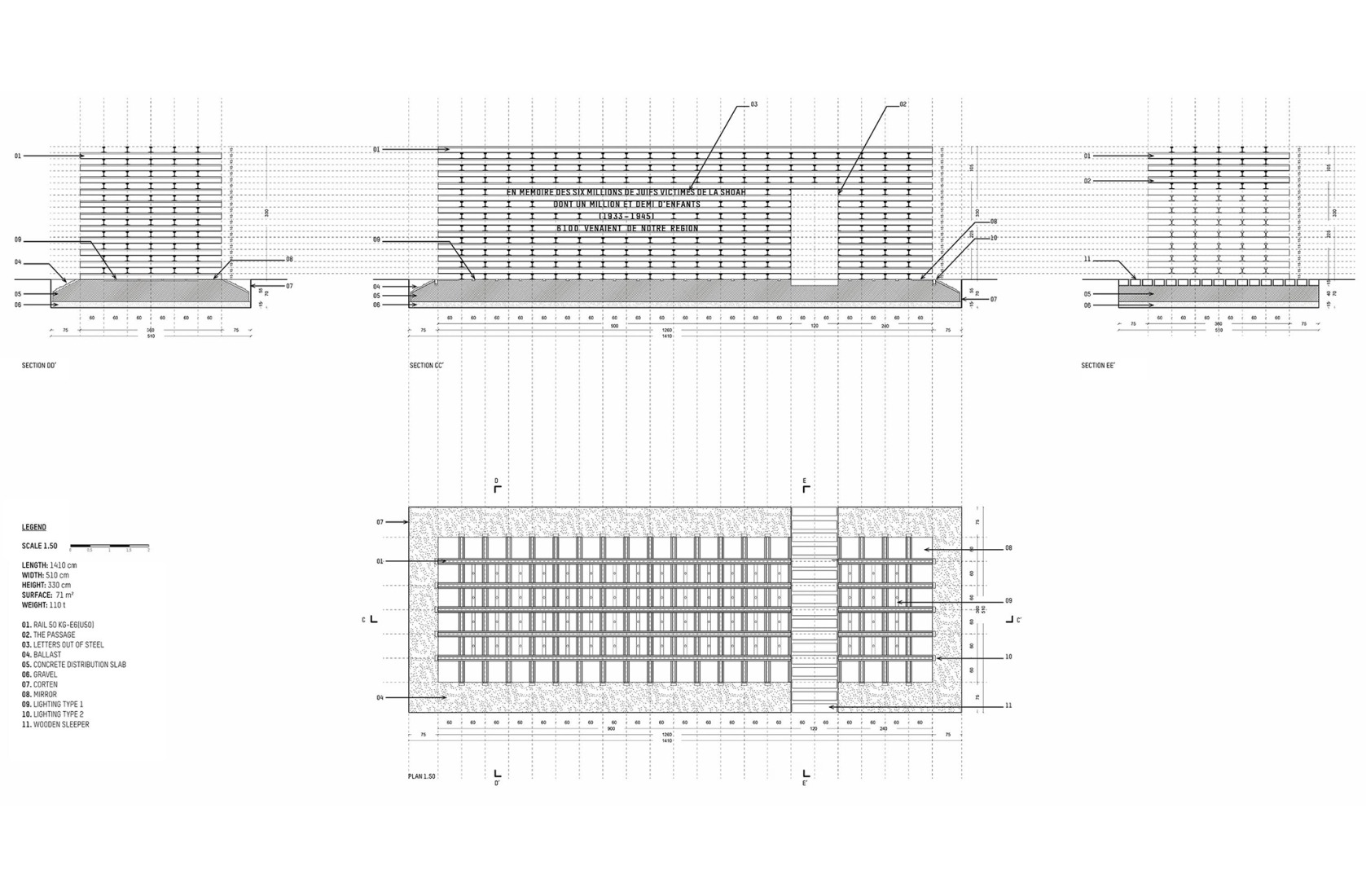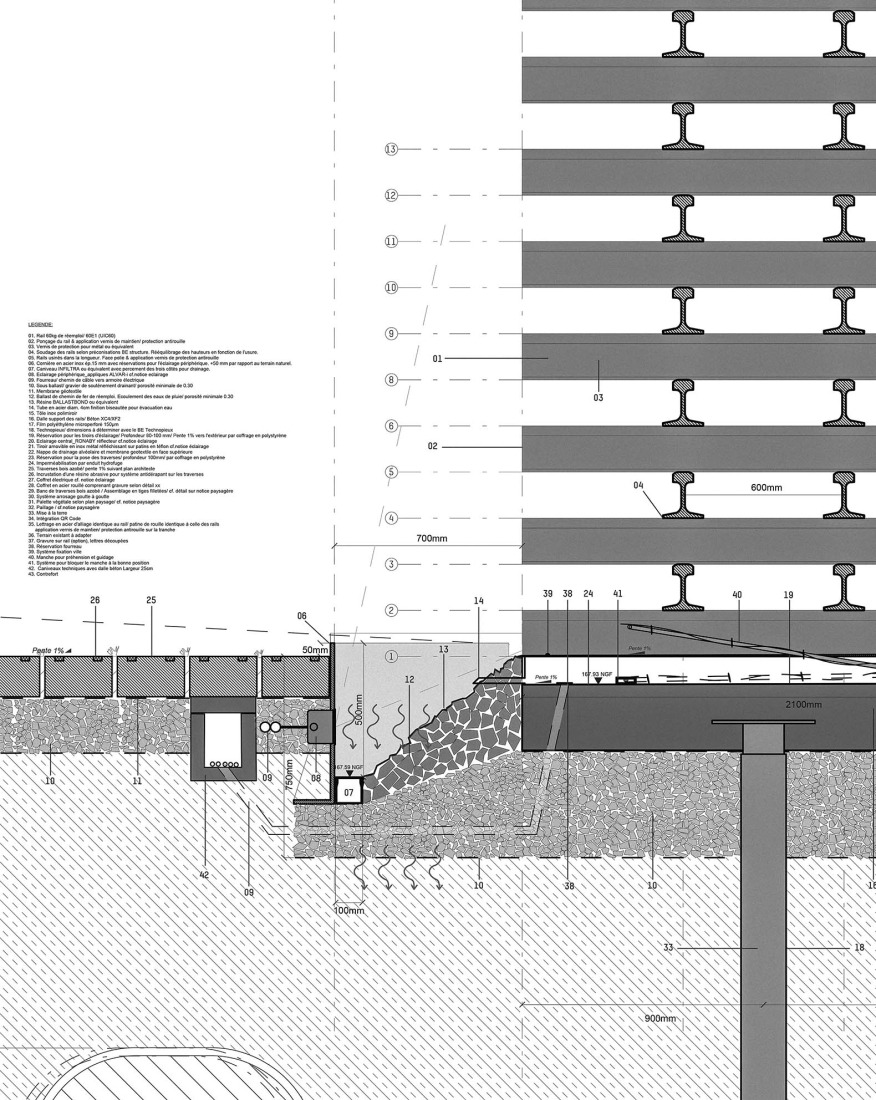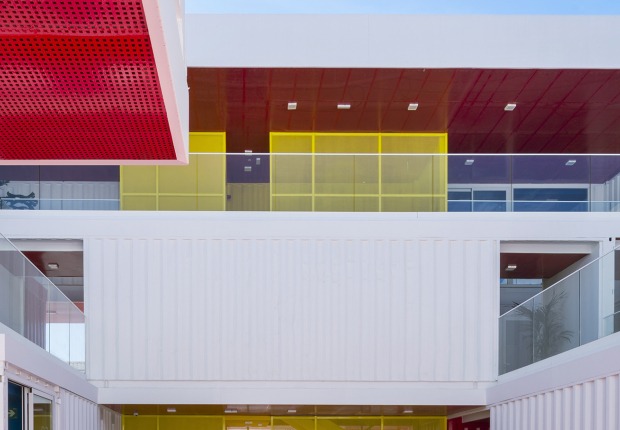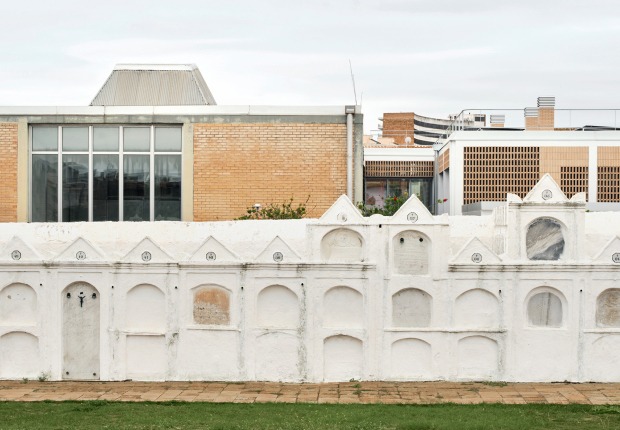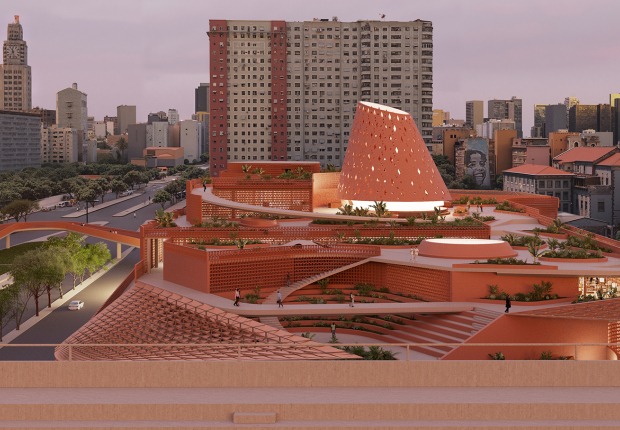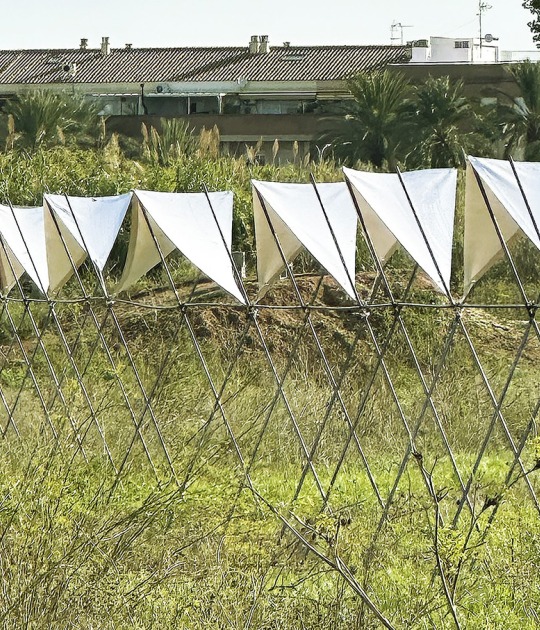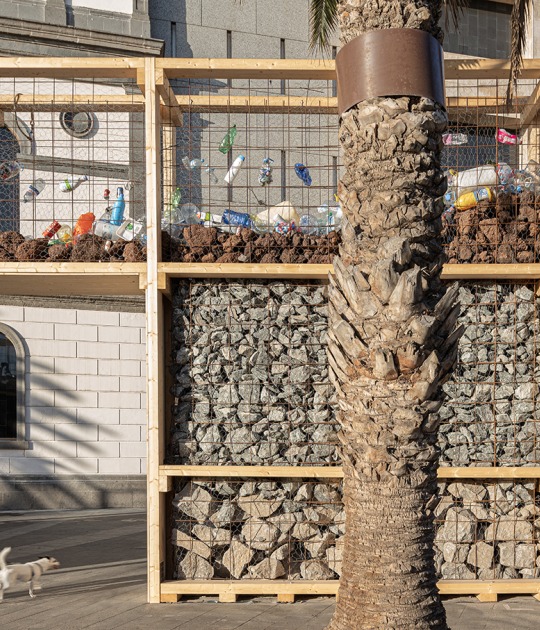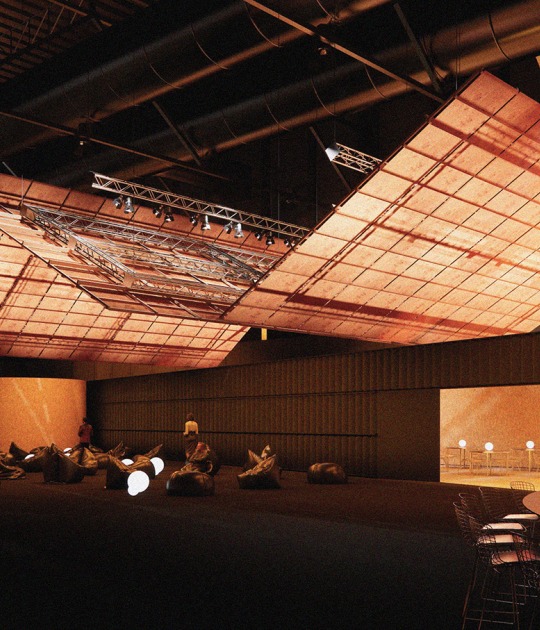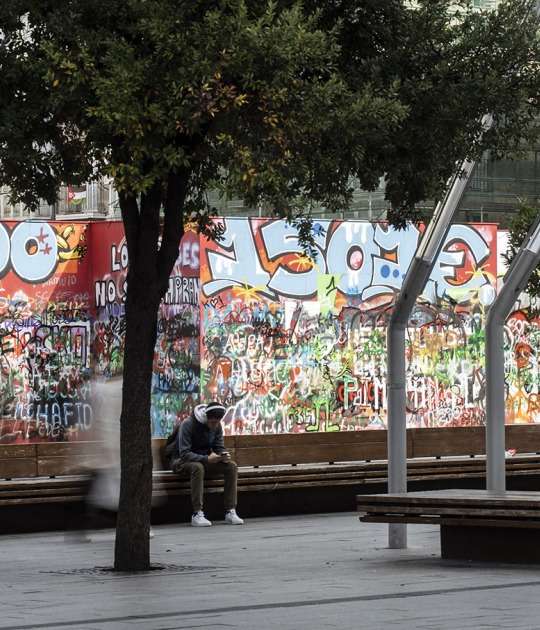Blaising Borchardt Studio designed this monument that evokes both the spirit of that tragedy and the history of the events that led to it. The Rails of Memory, a striking and moving architectural work, is much more than a simple memorial: it is a bridge between the past and the future, and a place where the memory of the victims of the Shoah is materialized, ensuring its permanence.
The result is a monument of striking power, where 1,173 meters of intertwined steel rails are the basis for remembering that tragic history: the 1,173 kilometers that separate Lyon from the Auschwitz-Birkenau concentration camp.

The Rails of Memory by Blaising Borchardt Studio. Photograph by François Baudry.
Every detail of The Rails of Memory is designed to evoke the inconceivable. The materials used—rails, wooden sleepers, and ballast—are authentic, sourced from railway tracks, lending a starkly expressive quality to the horror of deportation. These elements, both real and symbolic, create a tangible connection with the past, inviting visitors to feel, touch, and remember.
However, this memorial goes beyond paying tribute to the six million Jewish victims of the Shoah, 6,100 of whom were deported from the Rhône-Alpes region. It also aims to be an educational tool for future generations. Benches equipped with QR codes offer visitors immediate access to information about the association and the purpose of this site.

The Rails of Memory by Blaising Borchardt Studio. Photograph by François Baudry.
In this way, The Rails of Memory goes beyond remembering the past: it embodies a promise: that of never forgetting. It becomes an essential landmark of collective memory, a place where history comes alive and where the silence of the rails speaks louder than words.
